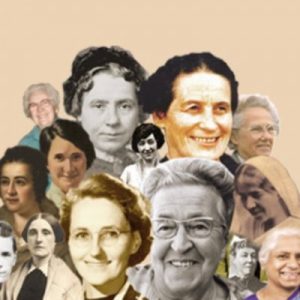Chapter 7 – Happiness and Service
- Happiness and Service
IN 1857 Mr. and Mrs. Spurgeon moved to Helensburgh House, Nightingale Lane, Clapham, a place which they found far more congenial than their first home in the New Kent Road. Clapham was at that time, quite a rural district, and, as the house possessed a large garden, the preacher greatly enjoyed the quiet and retirement which he could find there, in the midst of his abundant labors. The country lanes, too, provided delightful walks where the young couple could take recreation without being followed or accosted by admirers, which was not always the case in the neighborhood of their old residence. Speaking of the garden, Mrs. Spurgeon says: “Oh, what a delightsome place we thought it, though it was a very wilderness through long neglect — the blackberry bushes impertinently asserting themselves to be trees, and the fruit trees running wild for want of the pruning knife. It was all the more interesting to us in this sweet confusion and artlessness because we had the happy task of bringing it gradually into accord with our ideas of what a garden should be. I must admit ‘that we made many absurd mistakes both in house and garden management in those young days of ours; but ‘what did that matter? No two birds ever felt more exquisite joy in building their nest in the fork of a tree-branch than did we in planning and placing, altering and rearranging our pretty country home.”
Here, from time to time, a number of distinguished persons visited the minister and his wife, and here, during an illness of the preacher, much pleasant intercourse was had with John Ruskin, who, on one occasion, carried to the house as a present for his friends some charming engravings and some bottles of wine of a rare vintage. Mrs. Spurgeon speaks eloquently of the delightful times spent in her rural Clapham home. “We lived,” she says, “in the dear old house in Nightingale Lane for many happy years; and looking back upon them from this distance of time, I think they must have been the least shadowed by care and sorrow of all the years of our married life. We were both young and full of high spirits. We had fairly good health, and devoutly loved each other. Our children grew apace in the sweet country air, and my whole time and strength were given to advance my dear husband’s welfare and happiness. I deemed it my joy and privilege to be ever at his side, accompanying him on many of his preaching journeys, nursing him in his occasional illnesses, his delighted companion during his holiday trips, always watching over and tending him with the enthusiasm and sympathy which my great love for him inspired. “I mention this,” she explains, “not to suggest any sort of merit on my part, but simply that I may here record my heartfelt gratitude to God that, for a period of ten blessed years, I was permitted to encircle him with all the comforting care and tender affection which it was in a wife’s power to bestow. Afterwards God ordered it otherwise. He saw fit to reverse our position to each other; and for a long season, suffering instead of service became my daily portion, and the care of comforting a sick wife fell upon my beloved.”
The garden was a regular rendezvous of songbirds, and during her periods of convalescence it was Mrs. Spurgeon’s delight to sit at the window and feed the little creatures. In this way she made many feathered friends, and the birds would hop around her and feed from her hand, perfect love having quite cast out fear.
Saturday mornings for a good many years were devoted to the students, who used to march down from Mr. Rogers’ house where they resided, to Nightingale Lane, and there in the garden listen to the addresses of C. H. Spurgeon on theology, preaching and kindred topics, which were really the foundation of the famous “Lectures to Students.”
While she enjoyed good health Mrs. Spurgeon took, an active part in the work of her husband’s church, both at New Park Street Chapel and afterwards at the Metropolitan Tabernacle. She attended the services, often gave spiritual consolation to women and girls who were in trouble about their souls, and assisted the female candidates at the baptismal services. Writing in The British Banner, on April 12, 1861, of the first service of this kind in the mammoth building that had just been opened, Dr. Campbell said — “The interest of the thing was overpowering. We doubt if it was a whit inferior to that of taking the veil in the Church of Rome. There was the young orator, the idol of the assembly, in the water with a countenance radiant as the light, and there, on the pathway, was Mrs. Spurgeon, a most prepossessing young lady — the admiration of all who beheld her — with courtly dignity and inimitable modesty, kindly leading forward the trembling sisters in succession to, her husband, who gently and gracefully took and immersed them with varied remark and honied phrase, all kind, pertinent to the occasion, and greatly fitted to strengthen, encourage and cheer.” When, about a month later, the first church-meeting was held in the Tabernacle and a record of thanks and gratitude to God was placed on the pages of the Church-book, Mrs. Spurgeon was the first of a long list of members to sign it after the names of the pastor, deacons and elders had been appended.

Leave a Reply